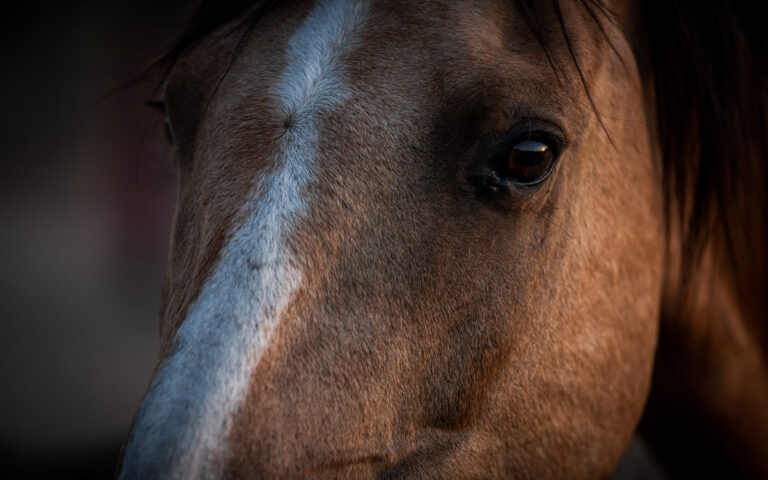You’ve probably heard of ration balancers when talking about equine nutrition, but do you actually know what the benefits of one can be for your horse?
What is a Ration Balancer?
First, let’s go over what ration balancers aren’t. They aren’t complete feeds, which contain high levels of crude fiber (because they’re intended to be in place of hay or other forage, thus why they’re called “complete”— nothing else is needed).
Instead, a ration balancer is a low-volume, nutrient-dense, concentrated feed designed to provide protein, vitamins, and minerals needed to balance a forage-first diet. Complete feeds typically contain up to 15% to 20% or more crude fiber and about 14% crude protein while ration balancers typically have about 4% fiber and up to 30% protein.
Meaning if your horse has access to pasture and he’s being fed good quality hay, there’s a good chance a ration balancer could help him reach his nutrient requirements without the added calories.
Nutrition Without the Added Calories
Ration balancers are an option for horses in most stages of life, but they’re especially beneficial for “easy keepers” and horses that have metabolic issues.
Complete grains are typically formulated to be fed at a minimum of 3 to 5 pounds per day to meet the nutrient requirements for the average 1,000- to 1,100-pound horse. For many, this means their horse, especially an easy keeper, will start gaining weight to meet the feeding rate required. To avoid that scenario, many horse owners reduce the amount of grain that is fed to decrease calories, which can put a horse at risk for deficiencies in essential vitamins, minerals, and protein.
Putting your horse on a ration balancer helps him get the nutrients he needs without gaining weight. They can also meet the nutritional needs of horses with metabolic conditions while minimizing the nonstructural carbohydrates that these horses should avoid.
Healthy Hair, Healthy Hooves

Horses need essential amino acids, including lysine, which helps with healthy hair and hooves, and to support muscle maintenance, and trace minerals, such as copper and zinc. While these nutrients are not found in adequate amounts in forage, they are supplemented in a ration balancer.
“If you notice your horse has poor quality hooves, it’s easy to think that you need to add a supplement to his diet. Instead, take a step back and ask yourself if your horse is meeting all his nutrient requirements,” explains Purina Equine Nutritionist Kelly Vineyard, Ph.D. “Chances are your horse is deficient in something nutritionally. Adding a ration balancer can help correct those problems by giving him the minerals and vitamins he needs to have good hooves and a healthy haircoat.”
Budget-Friendly Option
Ration-balancing feed is fed at a low feeding rate—only 1 to 2 pounds per day—but provides your horse with a protein level similar to a full ration of a typical 10% protein feed.
While the price tag for a bag of ration balancing feed might be more expensive than a traditional bag of feed, a little goes a long way. Due to the concentrated formula of ration balancers, you’ll notice that you get a significant number of feedings per bag. So you’ll be feeding less grain per day and saving more money in the long run.
Feed Accordingly
Not all feed scoops are created equally. Some hold more grain than others, and the best way to know if your horse is getting the correct amount of grain each day is by weighing it out. By reading the manufacturer’s feeding directions on the label and keeping a luggage or fish scale in your feed room, you’re ensuring your horse is getting the right amount of food he needs in a day.
Which One Is Right?
Omega Match® Ration Balancer is a limited-ingredient formula that addresses common sensitives while meeting your horse’s nutrient requirements and providing the fatty acids and antioxidants naturally found in green grass. This ration balancer provides a way to fill nutritional gaps, whether your horse has a busy competition schedule with limited turnout or can’t graze green grass due to metabolic concerns. It’s formulated without soy, alfalfa, corn, wheat, and molasses to support horses with sensitivities to these ingredients, and its controlled starch and sugar formula with no molasses results in minimal glucose and insulin response to feeding.
Enrich Plus® Ration Balancer was designed with easy keepers in mind and is a great option for horses that need protein, vitamins, and minerals without the added calories that come with more traditional feeds and is designed to be fed with hay or pasture. This concentrated source of nutrition has added antioxidants and added vegetable oils. It’s corn free and oat free, and when fed as directed it provides 100% of the required vitamins and minerals a horse needs.









